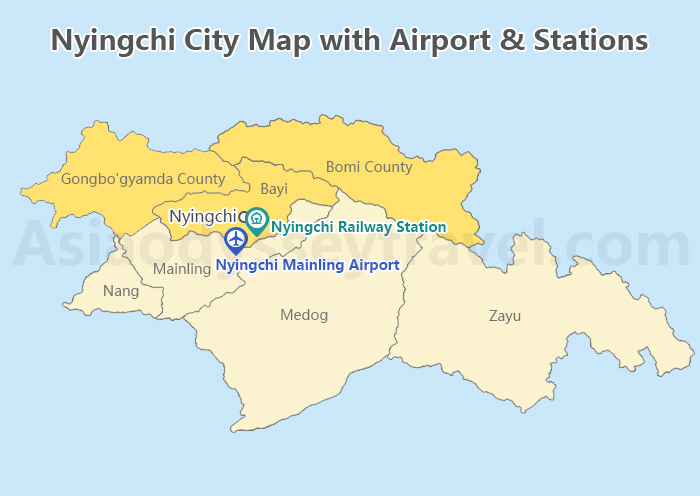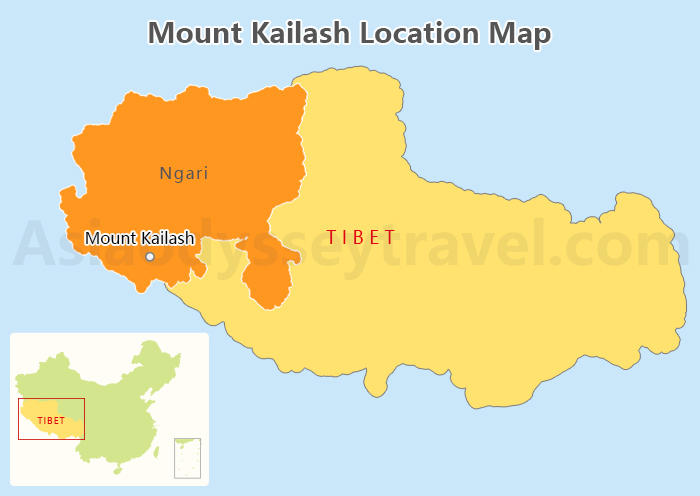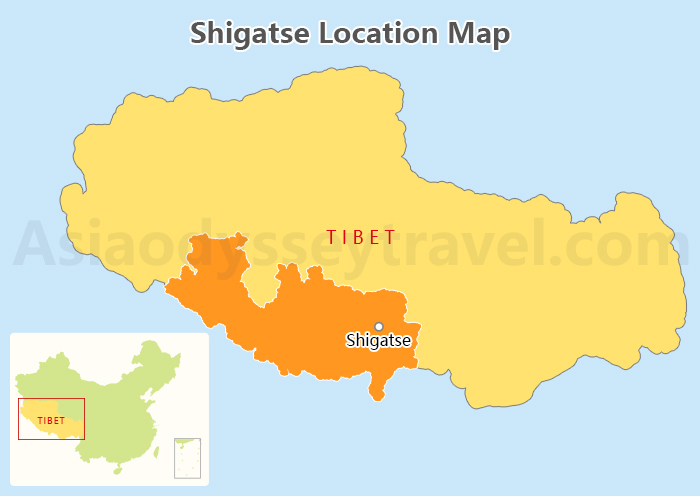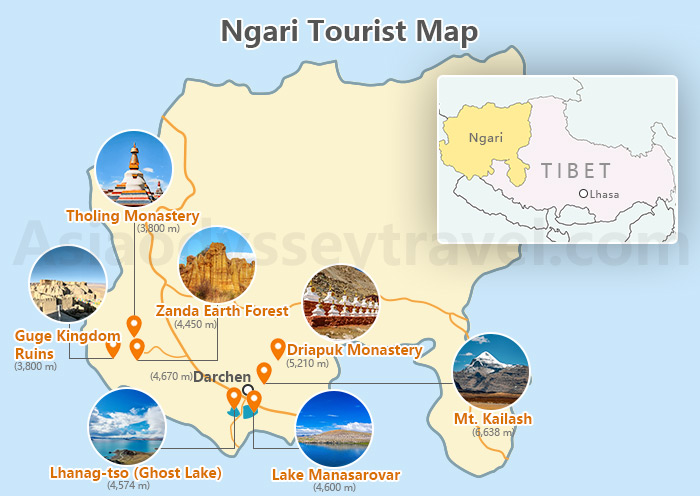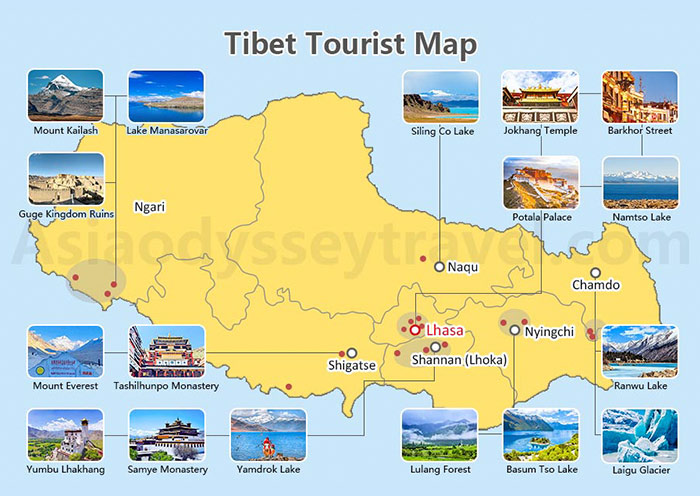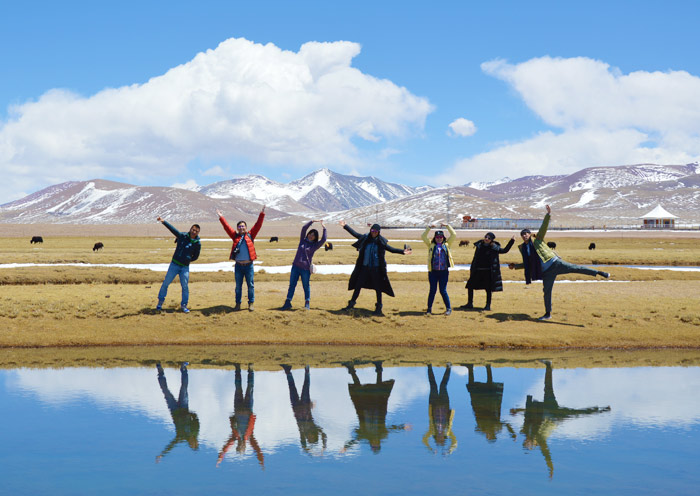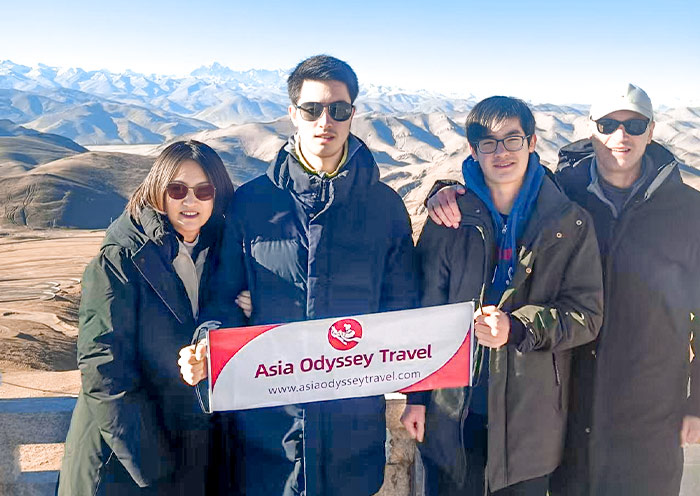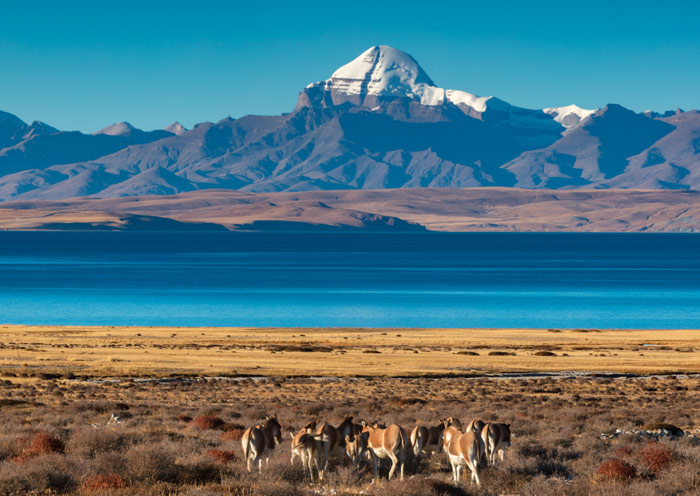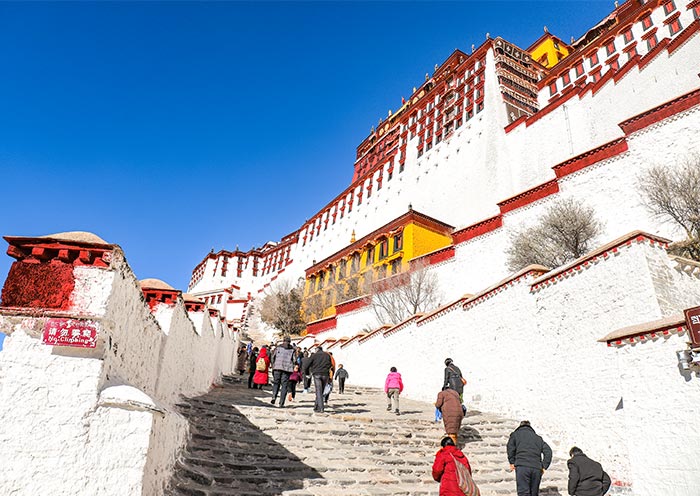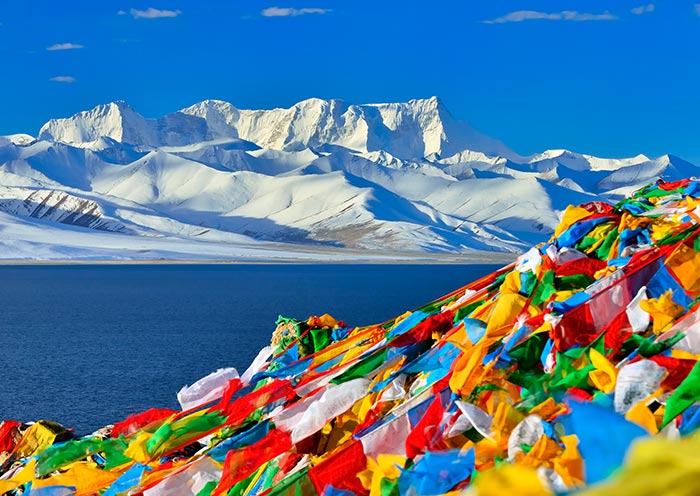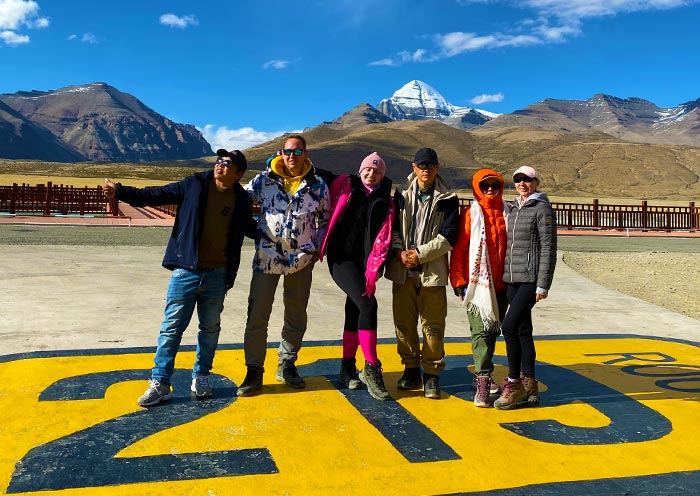Lhasa Location Map - Where is Lhasa, Tibet

China: Lhasa, the capital of Tibet Autonomous Region, is situated in southwestern China at an elevation of 3,656 meters (11,995 feet), making it one of the highest cities in the world. The city is located at coordinates 29°39'N and 91°08'E.
Tibet: Within Tibet, Lhasa lies in the central-southern part of the region, serving as Tibet's political, religious, and cultural hub. The city is nestled along the northern banks of the Lhasa River, bordered by other major Tibetan prefectures including Nagqu, Shigatse, and Nyingchi.
Himalaya: In the greater Himalayan region, Lhasa is positioned approximately 1,100 kilometers (684 miles) northeast of Kathmandu, Nepal, and about 1,350 kilometers (839 miles) northwest of Thimphu, Bhutan.
With the growing popularity of multi-country Himalayan tours in recent years, many international travelers choose Lhasa as their starting point before continuing their journey to Nepal and Bhutan.
Lhasa City Map – Accommendation Area & Dining Restraurent
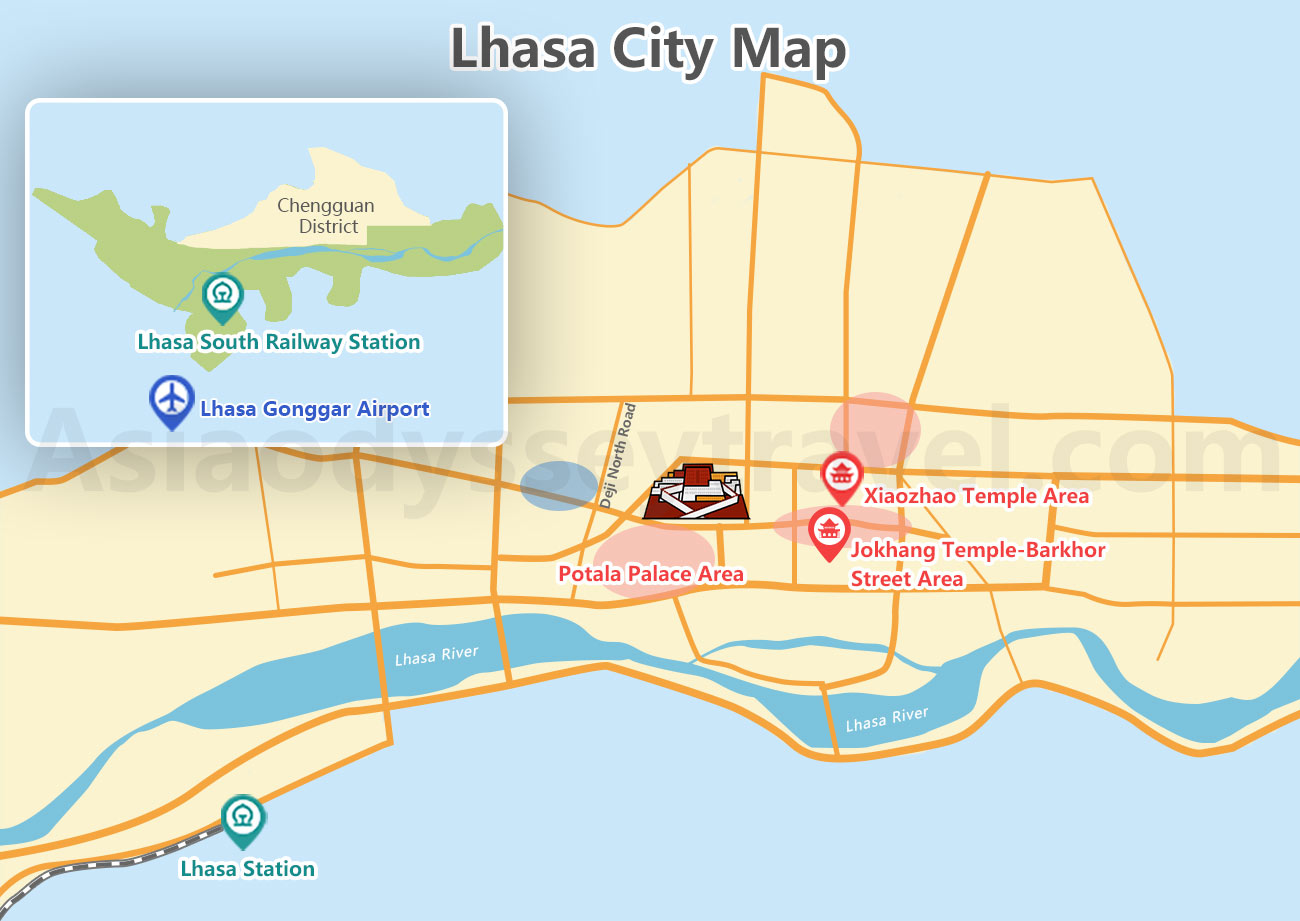
Lhasa is a vast city that extends as far as Lake Namtso, encompassing 8 districts/counties and 3 economic zones. However, tourists primarily need to focus on the Chengguan District, where most classic attractions are concentrated in the old town area, including the Potala Palace, Jokhang Temple, and Sera Monastery.
The Lhasa Railway Station in Duilongdeqing District and Lhasa Gonggar Airport (85 kilometers from the city) are other important landmarks.
Main Accommodation Areas in Lhasa:
- Jokhang Temple-Barkhor Street Area: The most popular area for tourists, located in the heart of old Lhasa. Perfect for first-time visitors with easy access to main attractions, restaurants, and shops. Accommodation options range from luxury hotels to budget hostels. Walking distance to both Jokhang Temple and Potala Palace.
- Xiaozhao Temple Area: Situated 500 meters north of Barkhor Street along Beijing East Road. Quieter than the Barkhor area but still convenient. Good public transport connections to suburban monasteries. Notable hotels include Holiday Inn Express Potala and Cloud Four Seasons Hotel.
- Potala Palace Area: Prime location for Potala Palace views, especially at night. Walking distance to Barkhor Street while offering a more peaceful environment.
Hotels in Lhasa: Where to Stay in Lhasa (Tibet)
Dining Districts in Lhasa
- Barkhor Street Area: The culinary center of old Lhasa, offering the city's most diverse dining options. You'll find traditional Tibetan restaurants alongside international cuisine. Must-try spots include the famous Ancient Tree Yogurt shop and Carlo's Italian Street Food. The area is particularly lively in the evening, with numerous small eateries serving local specialties like thenthuk (hand-pulled noodle soup) and momos (Tibetan dumplings).
- Tibetan Hospital Road (Danjielin Road): A charming street near Barkhor known for authentic Tibetan dining experiences. The area features traditional sweet tea houses where locals gather throughout the day. The Snow Region Restaurant is a standout choice, famous for its yak meat dishes and traditional Tibetan atmosphere. Several local bakeries offer fresh Tibetan bread and pastries.
- Deji North Road: Lhasa's modern dining district, popular with both tourists and locals. The street features contemporary restaurants serving both Tibetan and international cuisines. The area is particularly known for its clean, comfortable dining environments and fusion restaurants that blend local and foreign flavors. Perfect for those seeking familiar tastes with a Tibetan twist.
Restaurants in Lhasa: Tibetan Food to Try in Lhasa Restaurants
Lhasa Tourist Map - Top Lhasa Attractions on Map
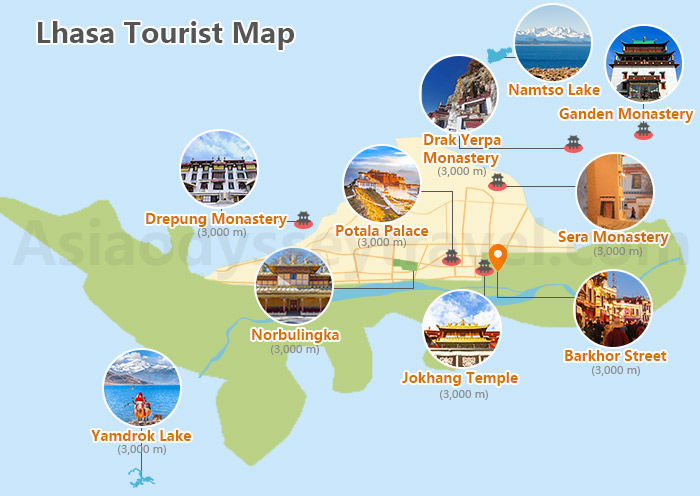
Lhasa is Tibet's most captivating destination, where exploration typically combines classic city attractions with suburban monasteries and beautiful surrounding lakes.
On this map, you can easily locate the city center attractions, nearby suburban sites, and two famous lakes in the surrounding area. To help you plan your acclimatization, each attraction is marked with its elevation above sea level.
City Center Attractions
Beyond the superstar Potala Palace, there are other remarkable attractions including the sacred Jokhang Temple, charming Barkhor Street, and the scenic Norbulingka. All these city attractions are within close proximity, just 2-3 kilometers apart, making it possible to walk from one site to another.
- Potala Palace: The iconic winter palace of the Dalai Lamas, rising 13 stories and dominating Lhasa's skyline with its stunning red and white facade.
- Barkhor Street: A bustling circular street that serves as Lhasa's spiritual heart, where pilgrims and tourists alike circle Jokhang Temple while exploring traditional markets.
- Jokhang Temple: Tibet's most sacred temple, housing the precious Jowo Buddha statue and serving as the spiritual center of Tibetan Buddhism for over 1,300 years.
- Norbulingka: The former summer palace of the Dalai Lamas, featuring beautiful gardens, traditional architecture, and peaceful grounds that showcase Tibetan landscaping at its finest.
Suburban Monasteries in Lhasa:
In Lhasa's suburban areas, several famous Tibetan Buddhist monasteries await discovery. These include Sera Monastery renowned for its debating monks, Drepung Monastery known for its grand Buddha display tradition, and Ganden Monastery and Drak Yerpa Monastery featuring scenic hiking opportunities. These monasteries are approximately 0.5-2 hours drive from Lhasa.
- Sera Monastery: Famous for its unique monk debates, where maroon-robed monks gather in the courtyard each afternoon, engaging in dramatic philosophical discussions with characteristic hand gestures.
- Drepung Monastery: The largest monastery in Tibet, once housing 10,000 monks, showcasing magnificent architecture and hosting the spectacular Shoton Festival's giant thangka display.
- Ganden Monastery: Perched at 4,300m with breathtaking valley views, this important Gelugpa monastery offers a beautiful kora (pilgrimage circuit) with panoramic mountain vistas.
- Drak Yerpa Monastery: A hidden gem carved into limestone cliffs, featuring ancient meditation caves and hermitages where many great Buddhist masters once meditated, offering a peaceful escape from busy Lhasa.
Surrounding Natural Wonders:
As a perfect complement to your Lhasa journey, Yamdrok Lake and Namtso Lake are must-visit classics. Both are among "Tibet's Three Holy Lakes," renowned for their spiritual significance and stunning natural beauty. They are approximately 2-4 hours away from Lhasa.
- Yamdrok Lake: A sacred turquoise jewel nestled among snow-capped mountains, this scorpion-shaped lake reveals breathtaking views from Kamba La Pass, with its stunning blue waters contrasting perfectly against the Tibetan plateau's rugged landscape.
- Namtso Lake: Known as the "Heavenly Lake," this vast salt lake sits at 4,718m, surrounded by magnificent snow peaks and dotted with nomadic tents along its shores, offering one of Tibet's most spectacular natural settings, especially magical during sunrise and sunset.
What to Do in Lhasa? Unlock 15 Lhasa Attractions (2025)
Lhasa Transportation Maps
As the capital of Tibet, Lhasa is the natural starting point for most Tibet adventures. Whether you arrive by train or plane, understanding your transportation options is crucial for a smooth journey to this ancient city.
China Tibet Train Railway Map
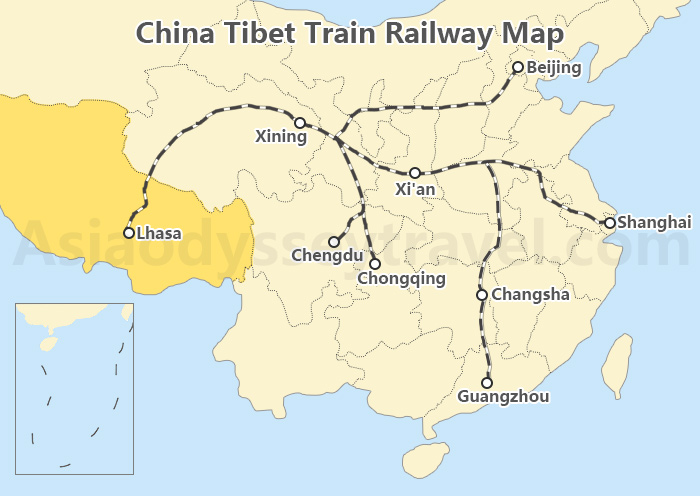
Taking the Qinghai-Tibet Railway to Lhasa stands as one of the most memorable experiences of any Tibet journey. The railway journey offers spectacular views of the Gobi Desert, snow-capped mountains, vast grasslands, and pristine lakes.
Lucky travelers might even spot the elusive Tibetan antelope along the way. The railway network now connects Lhasa with major Chinese cities including Beijing, Shanghai, Chengdu, Guangzhou, Chongqing, and Xining, making it increasingly accessible for travelers.
Flight Routes to Lhasa
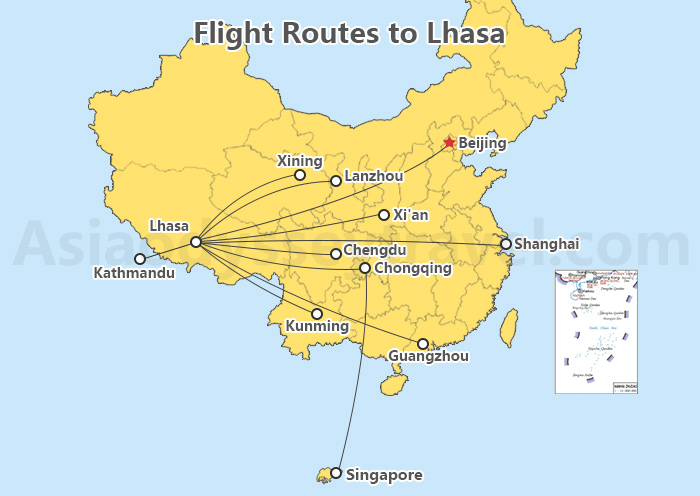
Air travel represents the quickest and most convenient way to reach Lhasa. On clear days, passengers are treated to breathtaking aerial views of the Himalayan range. Domestic flights connect Lhasa with major Chinese cities such as Beijing, Shanghai, Guangzhou, Kunming, Chongqing, Lanzhou, Xining, and Chengdu. For international travelers, Lhasa currently maintains air connections with Kathmandu, Nepal, and Singapore.
Lhasa City Transportation Map
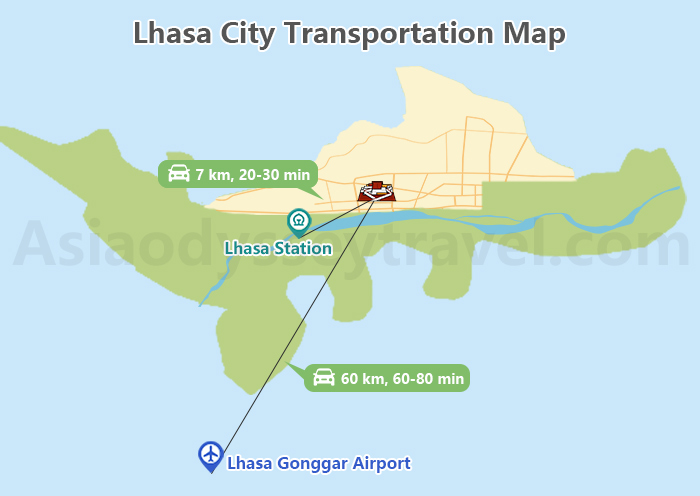
From Lhasa Railway Station:
- Address: 12 Liuwu New District, Doilungdeqen District, Lhasa
- Distance: 7 kilometers to city center
- Travel time: 20-30 minutes
From Lhasa Gonggar International Airport:
- Address: Gonggar County, Shannan Prefecture, Tibet
- Distance: 60 kilometers to city center
- Travel time: 60-80 minutes
How to Get to Lhasa City from Lhasa Railway Station (3 Ways)
How to Get from Lhasa Airport to City 2025/2026
Lhasa to Tibet Destinations Maps
Lhasa to Mount Everest Base Camp Map
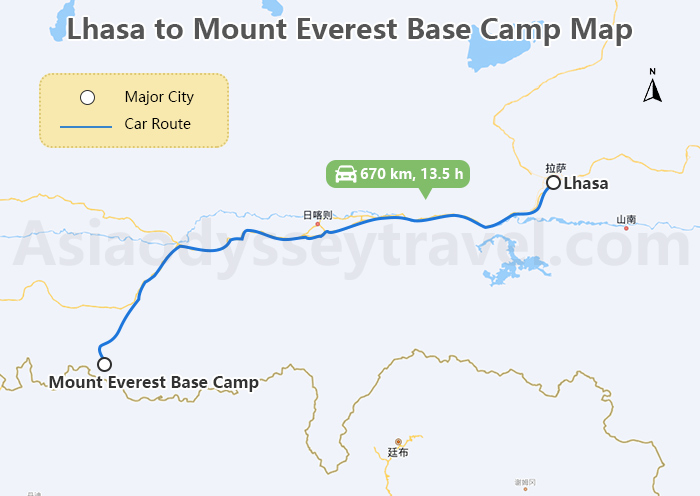
Mount Everest Base Camp is about 670 kilometers south of Lhasa. You can travel from Lhasa to view the world's highest peak, visit the historic Rongbuk Monastery, and experience the breathtaking panorama from Gawu La Pass. The journey takes you through some of Tibet's most dramatic landscapes.
Lhasa to Everest Base Camp: Distance, By Train & Car
Lhasa to Shigatse Map
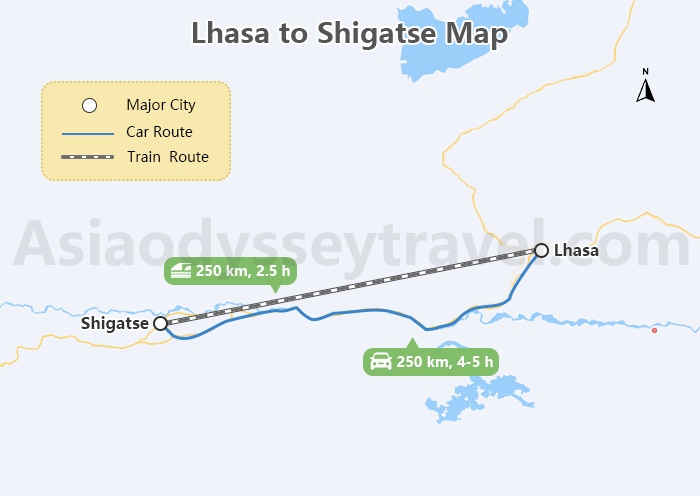
Shigatse lies 260 kilometers southwest of Lhasa. This important religious center is home to the magnificent Tashilhunpo Monastery, the traditional seat of the Panchen Lama, and the historic Sakya Monastery with its distinctive grey walls.
Lhasa to Shigatse Train Schedule, Tickets & Travel Tips
Lhasa to Mount Kailash Map
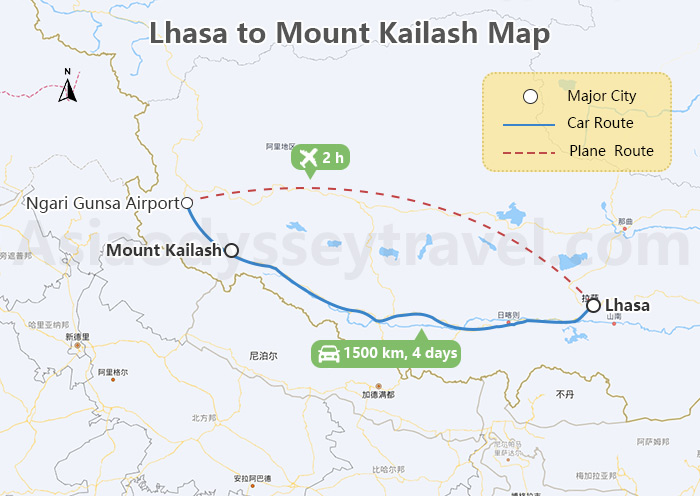
Mount Kailash, located 1,400 kilometers west of Lhasa, is one of Tibet's most sacred sites. This remote destination features the holy Mount Kailash and the pristine Lake Manasarovar, both significant pilgrimage sites for Buddhists and Hindus.
How to Get to Mount Kailash from Lhasa or Nepal
Lhasa to Nagqu Map
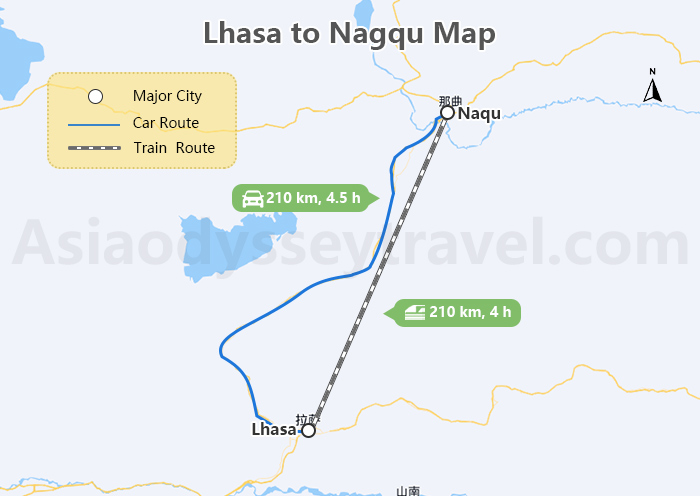
Nagqu is situated 210 kilometers north of Lhasa. The region is famous for Lake Namtso, one of Tibet's most beautiful high-altitude lakes, and Yangbajain Hot Springs, where visitors can enjoy natural thermal baths with mountain views.
Lhasa to Nyingchi Map
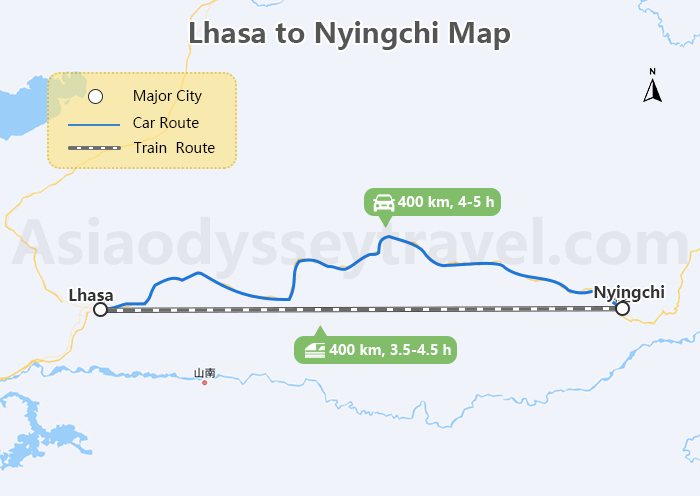
Nyingchi lies 400 kilometers east of Lhasa. This region showcases a different side of Tibet with the turquoise waters of Basum Lake and the stunning alpine scenery of Lulang Forest, often called the "Swiss Alps of Tibet."
Best Time to Visit Nyingchi in Tibet | Nyingchi Weather & Temperature
How to Plan a Lhasa Tour

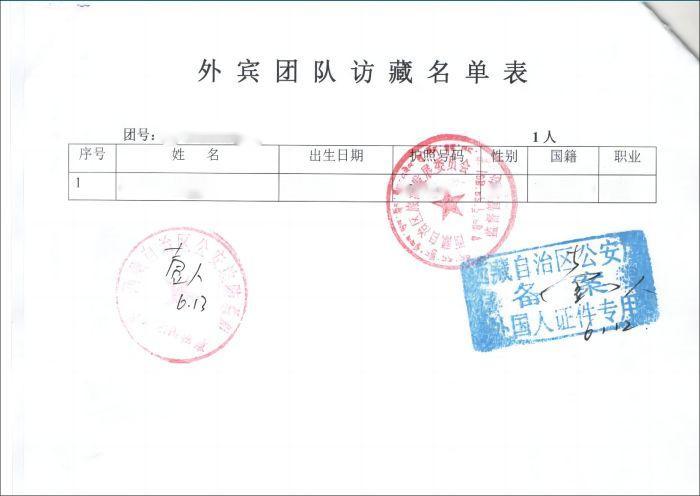
Tibet Travel Permit
For all travelers to Tibet, a Tibet Travel Permit is mandatory and can only be obtained through authorized travel agencies. At Asia Odyssey Travel, we provide complimentary permit application services when you book our Tibet group tours or private tours. Contact us now!
Classic Lhasa Itinerary
The ideal duration for a Lhasa visit is 4-5 days. This allows time to explore the city's iconic attractions, visit suburban monasteries, and take day trips to either Lake Namtso or Yamdrok Lake. This timeframe also helps with altitude acclimatization.
Extended Tibet Itineraries
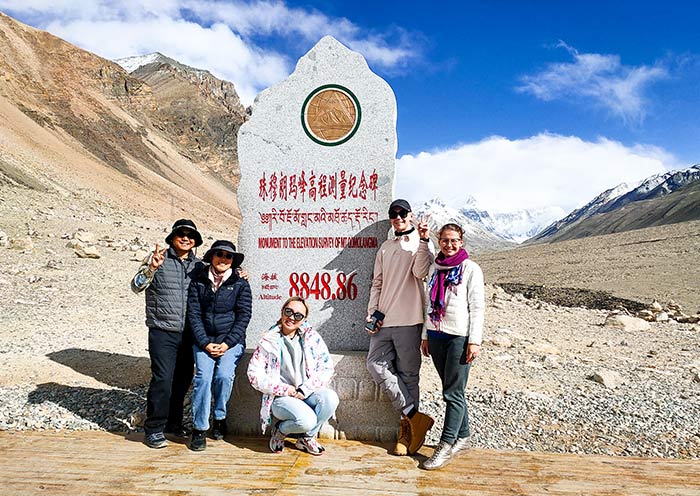

Combine your Lhasa visit with other Tibetan destinations:
- Lhasa + Mount Everest (7-8 days): Experience both Tibetan culture and the world's highest peak. This classic route includes Lhasa's highlights and the breathtaking journey to Everest Base Camp.
- Lhasa + Mount Kailash (15 days): A spiritual journey combining Lhasa's Buddhist sites with a pilgrimage to sacred Mount Kailash, suitable for adventurous travelers seeking a deeper Tibetan experience.
- Lhasa + Shigatse (6 days): Perfect for those interested in Tibetan Buddhism, featuring Lhasa's landmarks and Shigatse's significant monasteries.
- Lhasa + Nyingchi (6 days): Contrast Lhasa's high-altitude plateau landscape with Nyingchi's alpine forests and valleys, particularly beautiful during peach blossom season.
How to Visit Lhasa: How to Plan Lhasa Tour
Explore Tibet with Asia Odyssey Travel (AOT)
Discover Tibet's wonders stress-free with Asia Odyssey Travel! We handle permits, craft personalized itineraries, and pair you with expert local guides. From Everest treks to Lhasa's sacred sites, enjoy safe, authentic journeys with 15+ years of trusted expertise.
Tour Packages: Tibet Tours, Tibet Group Tours, Lhasa Tours, Shigatse Tours, Everest Base Camp Tours, Mount Kailash Tours, Nyingchi Tours
Tibet Theme Tours: Luxury Tours, Train Tours, Festival Tours, Bike Tours, Trekking Tours, Overland Tours, Winter Tours
Useful Tibet Travel Guide:
Travel Tips: Tibet Travel Permits, Tibet Safety Tips, Tibet Trip Cost, Best Time to Visit, Itinerary, How to Get to Tibet, Hotels, Food, Treks, Bike Routes, Lakes, Monasteries, Mountains, Weather Guide

